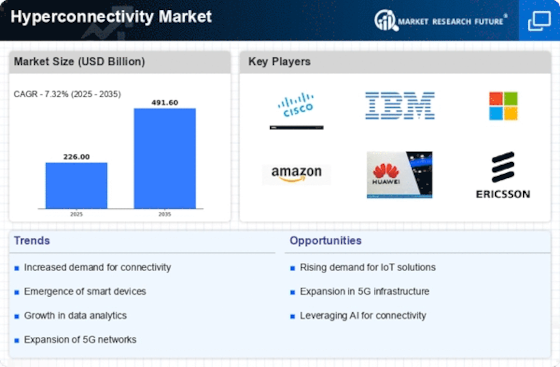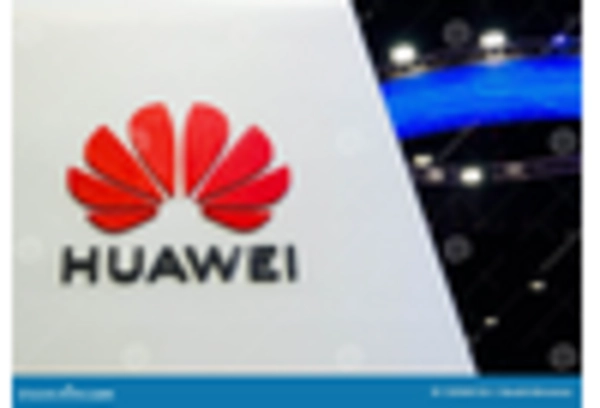Expansion of 5G Networks
The rollout of 5G networks plays a pivotal role in shaping the Hyperconnectivity Market. With its promise of ultra-fast data speeds and low latency, 5G technology is expected to revolutionize connectivity across multiple sectors, including healthcare, transportation, and entertainment. As of October 2025, it is estimated that 5G subscriptions will surpass 1.5 billion globally, further driving the demand for hyperconnected solutions. This expansion not only enhances mobile broadband experiences but also enables the deployment of advanced technologies such as augmented reality and autonomous vehicles, thereby propelling the Hyperconnectivity Market into a new era of connectivity.
Emergence of Edge Computing
Edge computing is emerging as a transformative force within the Hyperconnectivity Market. By processing data closer to the source, edge computing reduces latency and enhances the performance of connected devices. This technology is particularly relevant in scenarios where real-time data processing is critical, such as in autonomous vehicles and industrial automation. As organizations increasingly adopt edge computing solutions, the demand for hyperconnected systems that can efficiently manage data flow is expected to rise. Industry analysts predict that the edge computing market could reach over 20 billion by 2025, underscoring its potential impact on the Hyperconnectivity Market.
Rising Cybersecurity Concerns
As the Hyperconnectivity Market expands, so do concerns regarding cybersecurity. The increasing interconnectivity of devices and systems creates vulnerabilities that malicious actors may exploit. Organizations are prioritizing the implementation of advanced security measures to protect sensitive data and maintain user trust. The Hyperconnectivity Market is projected to grow significantly, with estimates suggesting it could reach over 300 billion by 2025. This heightened focus on cybersecurity is likely to drive innovations within the Hyperconnectivity Market, as companies seek to develop secure connectivity solutions that address these emerging threats while ensuring seamless user experiences.
Growing Adoption of Smart Cities
The concept of smart cities is gaining traction, significantly influencing the Hyperconnectivity Market. As urban areas increasingly integrate technology to improve infrastructure and services, the demand for hyperconnected solutions rises. Smart city initiatives often involve the deployment of IoT devices, data analytics, and real-time communication systems, all of which require robust connectivity. Reports indicate that investments in smart city projects are expected to reach trillions of dollars over the next decade, highlighting the potential for growth within the Hyperconnectivity Market. This trend not only enhances urban living but also fosters sustainable development through efficient resource management.
Increased Demand for Seamless Connectivity
The Hyperconnectivity Market experiences a surge in demand for seamless connectivity solutions as consumers and businesses alike seek uninterrupted access to digital services. This demand is driven by the proliferation of smart devices and the growing reliance on cloud-based applications. According to recent data, the number of connected devices is projected to reach 75 billion by 2025, indicating a substantial increase in the need for robust connectivity solutions. As organizations strive to enhance user experiences, the Hyperconnectivity Market is likely to witness innovations aimed at providing faster and more reliable connections, thereby facilitating the smooth operation of various applications across sectors.


















Leave a Comment